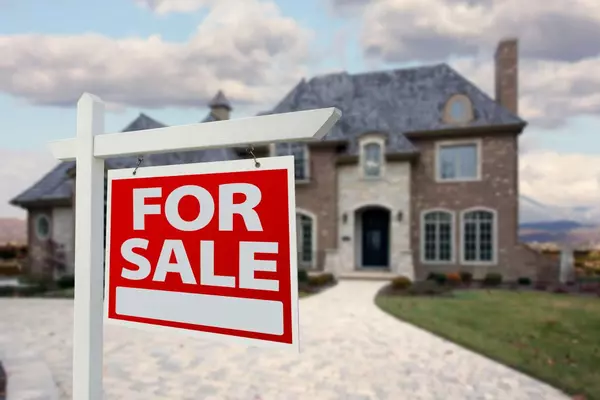
From Renter to Buyer
Making the leap from renter to homeowner is a major life milestone, but it's not one that should be taken lightly. The journey from renting to owning involves several key steps that require careful consideration and planning. This blog will walk you through the essential stages of the transition to homeownership: assessing your financial readiness, getting pre-approved for a mortgage, and researching and planning your purchase. Assess Your Financial Readiness The first step in transitioning from renting to owning a home is to thoroughly assess your financial situation. This is crucial, as buying a home is likely to be one of the most significant investments you will make in your lifetime. Start by analyzing your current financial status. Consider your income, savings, debt, and monthly expenses to get a clear picture of your financial health. One (often overlooked) aspect is your credit score. Mortgage lenders heavily weigh your credit score when determining your loan eligibility and the interest rates they offer. Make sure to obtain a copy of your credit report and examine it for any inaccuracies that can be disputed. If your credit score is less than stellar, take steps to improve it by paying down debt and ensuring you make all payments on time. It's also important to create a budget that accounts for all homeownership expenses. This includes not just the mortgage payment, but also property taxes, home insurance, maintenance, and utilities. Additionally, prospective buyers should have a substantial amount saved for a down payment and closing costs. The larger the down payment you can afford, the more favorable the terms of your mortgage will be. Get Pre-Approved for a Mortgage Once you have a clear understanding of your financial readiness, the next step is to get pre-approved for a mortgage. Pre-approval is a process where a lender evaluates your financial situation and commits to lending you a specified amount of money. This is different from pre-qualification, which is a more informal estimate of what you might be able to borrow. The pre-approval process involves submitting financial documents such as tax returns, pay stubs, and bank statements. Your lender will also check your credit report and score. Once you are pre-approved, you’ll receive a pre-approval letter, which signals to sellers that you are a serious buyer and have the financial backing to make a legitimate offer. Having a pre-approval letter in hand can give you an edge in competitive markets, as it shows sellers that you are financially capable of closing the deal. Additionally, being pre-approved can help you clearly determine your budget, ensuring that you don’t fall in love with a home that is out of your price range. Research and Plan Your Purchase Now that you are pre-approved for a mortgage, the next step is to research and plan your home purchase carefully. Start by identifying the neighborhoods where you’d like to live. Consider factors such as the quality of the local school system, proximity to work and amenities, and long-term property value trends. It’s beneficial to work with a seasoned real estate agent who can guide you through the process. A good agent will have extensive knowledge of the local market and can help you identify properties that meet your criteria. They can also assist you with making offers, negotiating terms, and navigating the closing process. Once you've identified some potential homes, it's time to conduct thorough due diligence. Attend open houses, take detailed notes, and ask questions about each property’s history and condition. Don’t hesitate to schedule a professional home inspection once you’re serious about a property, to uncover any hidden issues that could become costly repairs down the line. Making an Offer and Closing After conducting your research and finding the perfect home, you can make an offer. Your real estate agent will assist you in preparing a competitive offer based on comparable properties in the area and the current market conditions. Be prepared for some back-and-forth negotiations before mutually agreeable terms are reached. Once your offer is accepted, you'll move into the closing phase. This involves a final review of all documents, securing homeowner's insurance, and conducting a final walkthrough of the property. Closing costs, which can include appraisal fees, title insurance, and attorney fees, will also need to be settled. After everything is signed, sealed, and delivered, you are officially a homeowner. Celebrate this milestone, but also remember that homeownership comes with ongoing responsibilities. Budget for routine maintenance and unexpected repairs to ensure your new home remains a sound investment. Transitioning from renting to homeownership involves multiple, careful steps—assessing your financial readiness, getting pre-approved for a mortgage, and thoroughly researching and planning your purchase. By meticulously preparing for each stage and leaning on trusted professionals, you can navigate the process with confidence and soon enjoy the rewarding experience of owning your own home.

Virtual Tours: The Game-Changer in Home Buying
In today’s digital age, the real estate market is evolving rapidly, with virtual tours at the forefront of this transformation. No longer a novelty, virtual tours have become an indispensable tool for buyers, sellers, and even mortgage lenders. Their role in today's housing market is multifaceted, offering avenues to boost sales, reduce time on market, enhance buyer convenience, and expand reach beyond traditional boundaries. For Sellers: Boosting Sales and Reducing Time on Market One of the most significant advantages of virtual tours for sellers is the potential to boost sales and reduce the time a property remains on the market. Traditional home showings are time-consuming and can be logistically challenging, especially for homes that require significant preparation to appeal to potential buyers. Virtual tours address these issues by providing a 24/7 open house experience. Prospective buyers can explore properties at their own convenience, whether on a lunch break or late at night, widening the window of opportunity for a property to be viewed. Moreover, the immersive experience of a virtual tour allows potential buyers to form a stronger emotional connection with a home compared to still images or written descriptions. This can accelerate the decision-making process and generate offers more quickly. Additionally, sellers can attract serious buyers who have already taken a virtual tour, thus reducing the number of in-person visits and optimizing the showing process. This efficiency not only saves time but often translates to a faster sale. For Buyers: Enhancing Convenience and Reach For buyers, virtual tours offer unparalleled convenience, eliminating the need to physically visit numerous properties just to find the right match. Virtual tours break geographical constraints, enabling buyers to explore homes in different cities, states, or even countries without ever leaving their current location. This accessibility is particularly beneficial for relocating families, investors, and those with tight schedules. Furthermore, virtual tours provide a comprehensive view of a property, often including detailed floor plans, 360-degree views, and the ability to zoom in on specific features. This level of detail helps buyers make more informed decisions, as they can better assess the property's suitability for their needs. The ability to revisit a virtual tour multiple times also allows buyers to scrutinize specific details at their own pace, minimizing the pressure and rush often associated with in-person showings. For Mortgage Lenders: Streamlining Processes Mortgage lenders also benefit from the integration of virtual tours in the housing market. The detailed visualization offered by these tours helps lenders better assess the value and condition of properties, facilitating more accurate and efficient appraisals. This can speed up the loan approval process, aligning with the quicker sales cycles facilitated by virtual tours. Lenders can leverage virtual tours to monitor the progress of construction for new developments or renovations, further enhancing the accuracy of mortgage underwriting and minimizing risks. With more reliable data at their fingertips, lenders can streamline their processes, benefiting both buyers and sellers with faster and more transparent transactions. Boosting Market Appeal During Challenging Times In situations like the COVID-19 pandemic, where in-person interactions are limited, virtual tours have proven to be essential. They allow the real estate market to continue functioning, providing a safe alternative to traditional home viewings. Additionally, as buyer preferences shift toward more tech-savvy solutions, incorporating virtual tours into listings not only meets these expectations but often exceeds them, providing a competitive edge. Embracing Technological Innovation Real estate agents and firms who embrace virtual tour technology position themselves at the cutting edge of market innovation. They demonstrate a commitment to leveraging the best tools available to provide exceptional service to clients. This not only attracts a modern, tech-oriented demographic but also builds a reputation for being forward-thinking and adaptive. Virtual Tours: The New Norm Virtual tours are rapidly becoming the norm rather than the exception in the housing market. For sellers, they enhance marketability and expedite sales, reducing the time properties spend on the market. Buyers gain unparalleled convenience and a broader reach, making the home-buying process more efficient and enjoyable. Mortgage lenders benefit from more streamlined and accurate procedures. As the housing market continues to evolve, virtual tours will undoubtedly play a pivotal role in shaping its future, proving to be a critical asset for all parties involved. Embracing this technological advancement is no longer optional but essential for staying competitive in today’s dynamic real estate landscape.

Boost Property Value: The Benefits of Community Involvement
Community Involvement Can Enhance Property Value When it comes to investing in real estate, buyers and sellers are always on the lookout for ways to increase property value. While renovations, upgrades, and location are often the focus, one aspect that is often overlooked is community involvement. Engaging with your neighborhood can have a positive impact on property value, attracting buyers, enhancing social cohesion, and improving marketability. Increased Neighborhood Appeal One of the key benefits of community involvement is the increased neighborhood appeal it creates. Buyers are not just looking for a house; they are looking for a community to call home. When a neighborhood actively participates in community events, maintains clean and well-kept public spaces, and supports local businesses, it creates a sense of pride and attractiveness that draws in potential buyers. A community that organizes regular events, such as block parties, holiday celebrations, or charity drives, creates a welcoming environment for residents and visitors alike. Buyers are often attracted to neighborhoods where they can envision themselves being a part of a vibrant and active community. This increased neighborhood appeal can contribute to higher demand for properties, ultimately leading to an increase in property values. Enhanced Social Cohesion Community involvement fosters a sense of belonging and social cohesion among residents. When neighbors come together to collaborate on projects, support local causes, or participate in community activities, they build relationships and connections with one another. This creates a tight-knit community where residents feel a sense of security and trust. Properties located in neighborhoods with strong social cohesion are often more desirable to buyers. Knowing that they will be part of a supportive and friendly community can greatly influence their decision to invest in a particular area. As a result, properties in these neighborhoods tend to have higher property values compared to those in communities where social connections are scarce. Positive Perception and Marketability Active community involvement also contributes to a positive perception of a neighborhood, both among residents and potential buyers. When a neighborhood is known for its engaged and caring residents, it gains a reputation for being a great place to live. This positive perception can significantly impact the marketability of properties in the area. Buyers are more likely to be interested in properties located in neighborhoods with a positive reputation, which can lead to increased demand and higher property values. Additionally, sellers can benefit from this positive perception by attracting more potential buyers, resulting in quicker sales and potentially higher sale prices. How to Get Involved If you're a buyer or seller interested in enhancing property value through community involvement, there are several ways you can get started. Here are a few ideas: Attend community events: Participate in neighborhood gatherings, such as block parties, farmers markets, or local festivals. These events not only allow you to connect with your neighbors but also demonstrate your commitment to the community. Support local businesses: Patronize local shops, restaurants, and services. By shopping locally, you not only contribute to the local economy but also show your support for the community. Volunteer: Get involved in community projects, such as cleaning up parks, organizing fundraisers, or mentoring local youth. Volunteering not only benefits the community but also allows you to build relationships with your neighbors. Join neighborhood associations: Become an active member of your neighborhood association or homeowners' association. These organizations often play a crucial role in organizing community events and initiatives. Community involvement is a powerful tool that can enhance property value. Through increased neighborhood appeal, enhanced social cohesion, and positive perception and marketability, an engaged community can attract buyers and create a thriving real estate market. Whether you're a buyer or seller, consider getting involved in your community to maximize the value of your property and enjoy the benefits of a strong and connected neighborhood.
Categories
Recent Posts










